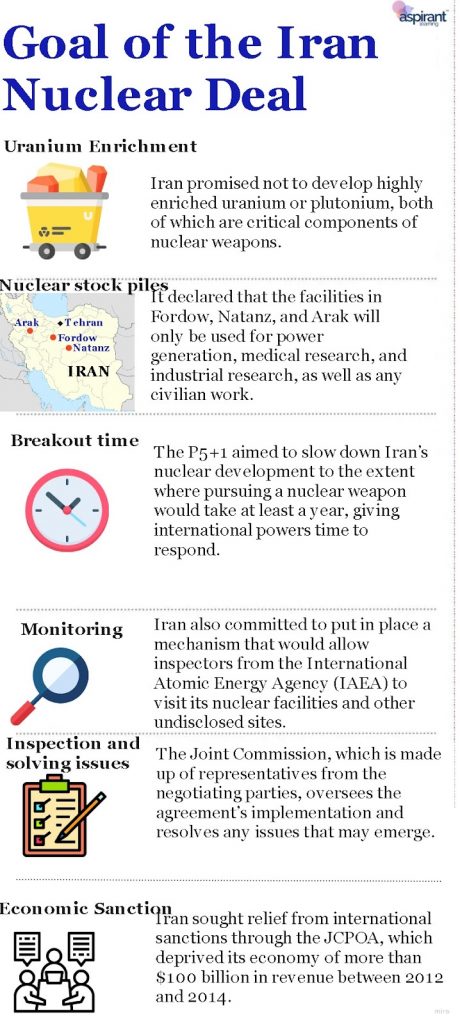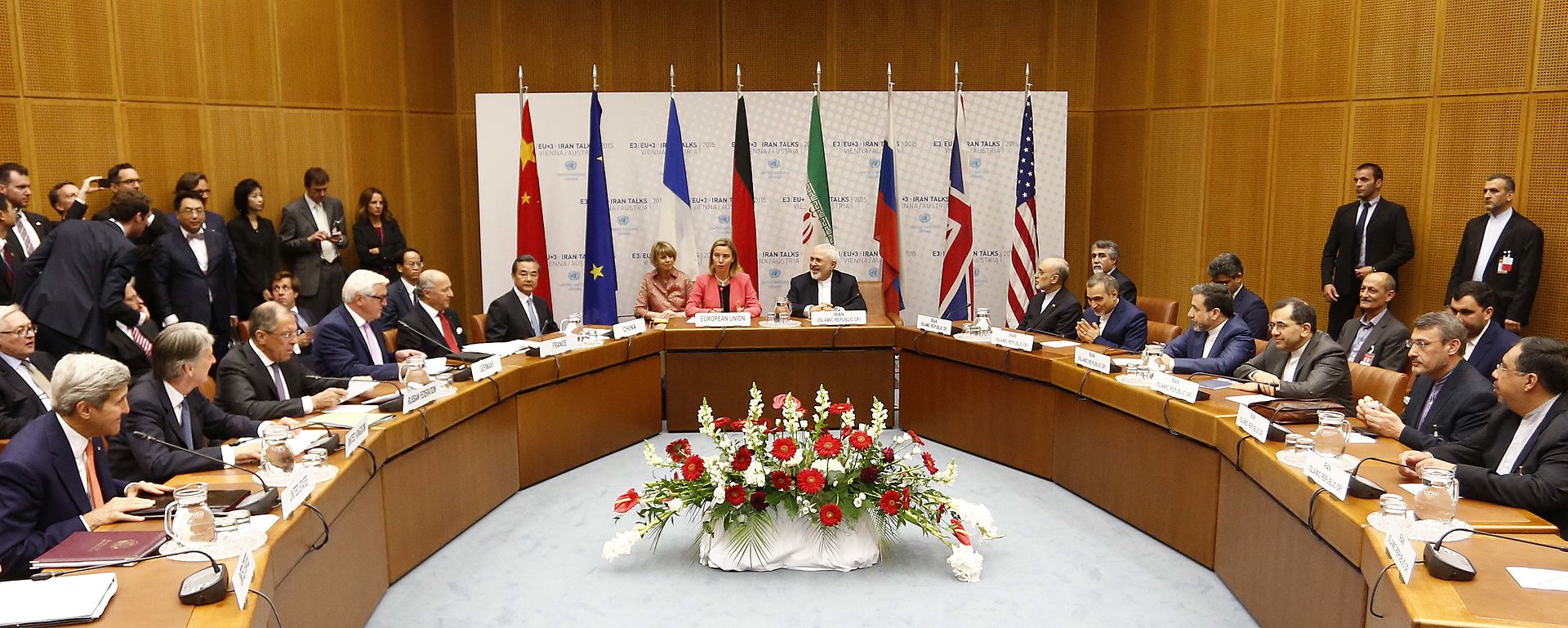News Highlights
Major European countries and the United States are expected to seek to censure Iran as the UN atomic watchdog started meeting with talks to revive the 2015 Iran nuclear deal which is stalled
About Iran Nuclear Deal
- The Iran Nuclear Deal, formally known as Joint Comprehensive Plan of Action (JCPOA) is an agreement on the Iranian nuclear program reached in Vienna on 14 July 2015, between Iran and the P5+1 (the five permanent members of the United Nations Security Council—China, France, Russia, United Kingdom, United States—plus Germany).
Background of Iran Nuclear Deal (JCPOA)
- Iran received aid from the United States in developing its nuclear programme in the 1970s as part of the ‘Atoms for Peace’ programme. Iran’s Shah even signed and approved the Treaty on the Non-Proliferation of Nuclear Weapons (NPT) in 1968 as a non-nuclear weapons state.
- When the Iranian revolution put the government’s nuclear programme into disarray and many bright scientists departed the country, everything changed. The new leadership was openly antagonistic to the United States, effectively putting an end to any chance of aid from them.
- With help from Pakistan (which signed a bilateral agreement with Iran in 1992), China (which did the same in 1990), Russia (which did the same in 1992 and 1995), and the A.Q. Khan network, Iran resurrected its nuclear programme in the late 1980s.
- Despite Iran’s claims that its nuclear programme is for peaceful reasons, Western nations and its Middle Eastern allies believed otherwise.
- Throughout the 2000s, Iran and Western nations engaged in back-and-forth negotiations that yielded little progress. Iran even built heavy water and uranium enrichment reactors, prompting economic penalties from the US and the European Union.
- The Joint Comprehensive Plan of Action would not be finalised until July 15, 2015. So far, it is the most well-thought-out and solid nuclear strategy ever devised.
Goal of the Deal

Agreements accepted by the P5+1 and others
- The European Union, the UN, and the United States agreed to lift the sanction on Iran with some US sanctions dating back to 1979 remaining in effect.
- These sanctions were placed due to Iran’s support of terror groups, human rights abuses, and its ballistic missiles program.
- The parties involved also agreed to lift sanctions on a Weapons embargo provided the United Nations confirms through the IAEA that Iran is only engaged in civilian nuclear activities.
Iran’s current nuclear activity
- Iran’s current nuclear activities: In 2019, Iran began enriching uranium to higher concentrations after breaching agreed-upon limits on its stockpile of low-enriched uranium (though still far short of the purity required for weapons).
- It also resumed heavy water production at its Arak plant and began enriching uranium at Fordow, rendering the isotopes generated there useless for medicinal purposes.
Significance of Iran Nuclear Deal for India
- Regional Connectivity
- Removing sanctions might rekindle India’s interest in the Chabahar and Bandar Abbas ports, as well as other regional connectivity projects.
- This would also assist India in neutralizing China’s footprint in Pakistan’s Gwadar port.
- Energy Security:
- The re-establishment of links between the United States and Iran will assist India in obtaining low-cost Iranian oil and ensuring energy security.
Content Source : The Hindu



